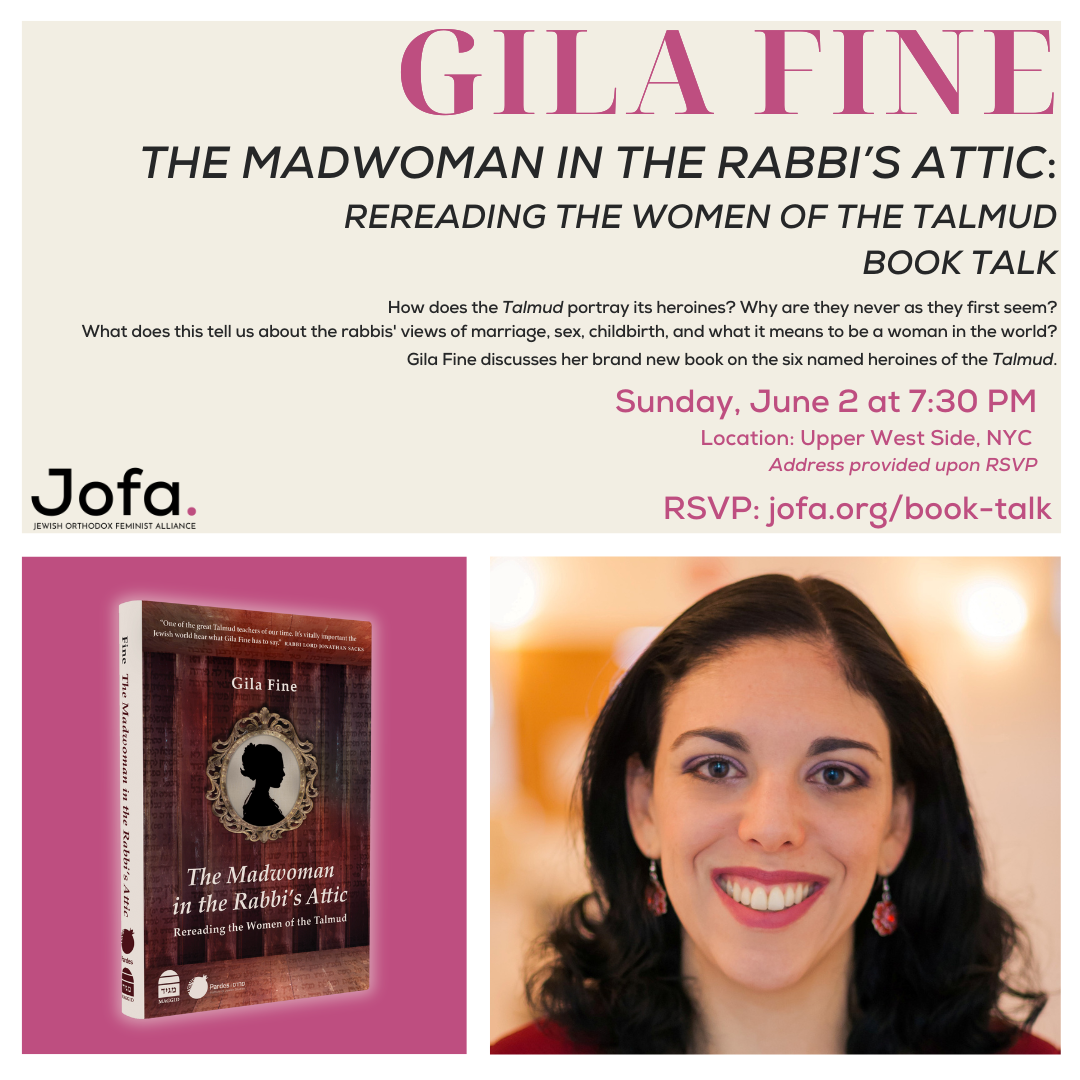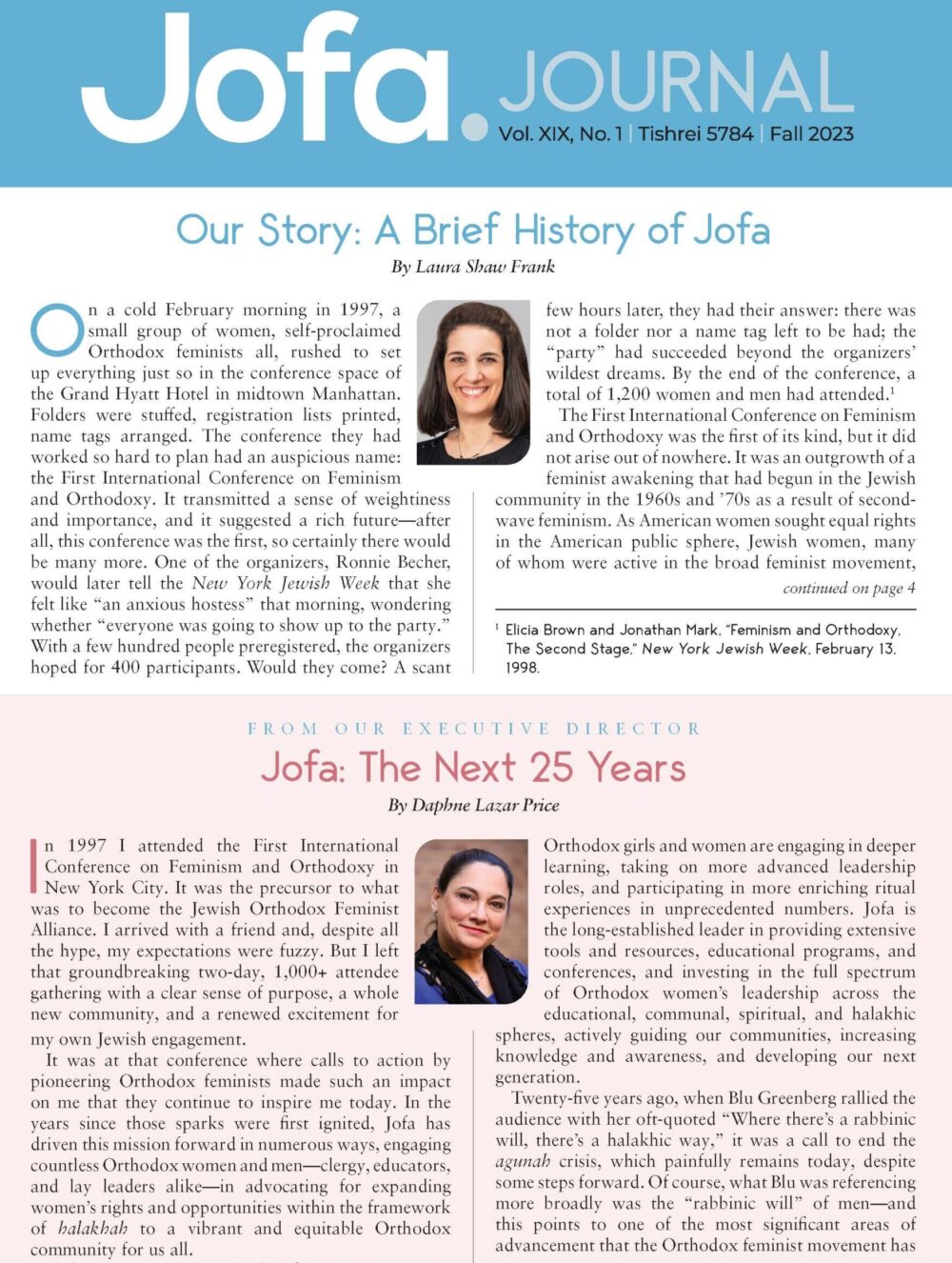Learning from Male and Female Teachers, Teaching Male and Female Students Differentially
By Sharon Freundel
For many years, in the girls’ Tanakh classes that I taught at a Modern Orthodox day school, I would help my students learn how to write and deliver a d’var Torah, which one student would present each Friday. The girls would sit and listen attentively to the speaker and then raise their hands to ask questions or delve deeper into a concept. It was a highlight of the week for them and for me.
When I accepted an invitation to teach boys’ Tanakh classes, believing in equity in learning, I initiated the same approach to teaching d’var Torah skills to the boys that I had used with the girls. For those who have taught boys, the result won’t surprise you. The first week, the presenter stood up, began sharing his d’var Torah, and within a sentence or two was interrupted by three classmates, correcting or questioning his thesis. It was an eye-opener for me, as I had never needed to direct the girls to wait with their questions and comments. It quickly became apparent that the boys needed explicit directions on what to do and what not to do. To their credit, once they were instructed on the rules of presentation, for the most part, they stuck to the structure.
This story captures in microcosm the differences between teaching boys’ classes and girls’ classes. It’s worth noting that I have also taught Tanakh to co-ed classes, which creates a third dynamic: that of boys—as a general rule—being much less reticent than girls, who often need encouragement in a mixed classroom to avow firmly their ideas and opinions.
Granted, these are only anecdotes reflecting my experiences, yet, much of the research in the field confirms my perceptions. Whether the differences between boys and girls are innate or socialized behavior is, frankly, beside the point. At the end of any research project, debate, or discussion about the root causes of differences between genders, all parties come to the conclusion that nature and nurture are simultaneously responsible. There is no hard evidence to prove that one or the other is the primary causative factor. However, it is clear that boys and girls learn differently, that their brains are wired differently, that they have been raised in a culture of different expectations and norms, and that even their moral development varies.
Importance of Having Teachers of Both Genders
Because of these differences, I would strongly suggest that it is important for everyone to be exposed to teachers of both genders (if this arrangement falls within the hashkafic boundaries of a school). In many Orthodox day schools, girls are more likely to be taught by men, and I believe it is just as critical for boys to be taught by women.
After my first week teaching the boys, one mother reported to me that her son came home incredulous, saying to her, “Did you know that women know Rashi and other meforshim [commentaries] and can actually teach them?” How sad that it took this child until eleventh grade to engage in deep learning from a Jewishly educated female teacher (beyond the primary grades).
The intrinsic differences between how males and females learn are consistent with their differing communication styles, as outlined in Deborah Tannen’s book, You Just Don’t Understand. Tannen’s evidence underscores why, specifically, there is benefit for every person to experience Jewish learning with teachers of the same gender and the opposite gender.
The Evidence from the Song of Devorah
Males and females engage with the world differently, reflected by their communication and learning styles. As an example, I direct you to the Torah portion of Beshalah and its haftarah. In both, a song is sung—by Moshe and by Devorah, respectively—thanking God for protecting and saving the Jewish people. There is one subtheme that is absent in Shirat Hayam (the Song of the Sea) in the parashah that appears in Shirat Devorah (the Song of Deborah) in the haftarah (Judges 5:28): “Through the window Sisera’s mother peered, through the lattice she moaned, ‘Why is his chariot so long in coming? Why so late the clatter of his wheels?’” The answer given to Sisera’s mother by her female servants is contemptible, and yet is one with which she agrees, but that’s not the point. The point is that Devorah, in her womanhood, understood that even the evil Sisera was someone’s son and that there was a woman out there agonizing over the absence of her loved one. That is a quintessential female view, quite different from what we might expect from a male perspective. Perhaps this is one of the reasons for the juxtaposition of these two songs: to point out the difference in perspective between the genders. And that difference reinforces why every Jewish student should learn Torah from both men and women.
The Barriers and the Rewards
Of course, the idea of all students being exposed to both male and female teachers is all well and good until reality kicks in. There are a number of barriers to implementing this optimal teaching paradigm:
In too many schools, the hashkafic belief is that male students should be taught by men, whereas female students may be taught by either men or women. Certainly, the separation of the genders in some precincts has been taken to absurd levels, even with photographs of women being erased. I would maintain that it is precisely within these subgroups that boys need to be exposed to women’s intelligence, scholarship, and points of view. This model is necessary for Orthodox day schools of all stripes and approaches.
The pool of available female teachers, especially at the high school level, is still remarkably shallow. Thanks to such institutes of higher learning asYeshivat Maharat, Yeshiva University’s GPATS (Graduate Program for Advanced Talmudic Study) and Azrieli School of Education in New York City, Nishmat and MataN in Israel, and others, the number of well-educated female Jewish studies professionals has increased. In terms of the history of the Jewish people, this expansion of women’s Judaic scholarship has been exponential. As a frame of reference, my grandmother was taught only the Tzena U’rena in Yiddish and could not read Hebrew; my mother was self-taught in Tanakh, and I—having attended a Jewish day school my entire life—began learning Gemara only in college. Compare that to the education received by my daughter, who learned a much broader variety of Torah Shebikhtav (Written Torah) and Torah Shebe’al Peh (Oral Torah) literature during her day school tenure in the 2000s. It will take at least an additional generation to create a sufficient number of female teachers to allow each Jewish day school student to experience teachers of both genders.
In my estimation, too many female Torah scholars continue to make the mistake of offering solely or primarily Torah lessons directly related to women’s issues. To be taken seriously, female Judaic studies teachers and scholars need to support the idea that the entire Torah applies to women—not just topics about women. They must begin to focus on Torah topics that are not gender-based, in order to put a female “lens” on everything in the Torah, all of which applies to every member of the Jewish people.
In the past few years, there has been an emphasis on raising the profile of women in STEM and on highlighting men in historically female roles such as caregivers and nurses. Similarly, let’s elevate to a norm the practice of everyone benefiting from having both male and female Torah teachers. Role models of both genders can demonstrate for students what it means to be a righteous Jew and can elucidate in very different ways the beauty and the secrets of our holy Torah.
To date, I am not aware of any research that has been done to evaluate the outcomes of students learning Torah from both genders and the effect that might have on their Jewish connectedness and enduring identity. It would be interesting to assess whether this paradigm creates a significant difference in student learning outcomes. We surely need to do a better job of inculcating Jewish values into our children than we are currently doing. Perhaps this is one step that might help.
Sharon Freundel is the managing director of the Jewish Education Innovation Challenge whose mission is to catalyze radical improvement in Jewish day schools. Previously, she served as the Director of Jewish Life at the Milton Gottesman Jewish Day School of the Nation’s Capital in Washington, D.C.; before that, she taught and was the department chair for Tanakh (Bible) and Torah Shebe’al Peh (Rabbinics), and was the mashgiha ruhanit (spiritual guidance counselor) of the Upper School at the Berman Hebrew Academy in Rockville, MD. In addition, she teaches adult Jewish education classes.
Call-outs:
In all too many schools, the hashkafic belief is that male students should be taught by men, whereas female students may be taught by either men or women.
Role models of both genders can demonstrate for students what it means to be a righteous Jew and can elucidate in very different ways the beauty of our holy Torah.
The pool of available female teachers, especially at the high school level, is still remarkably shallow.









